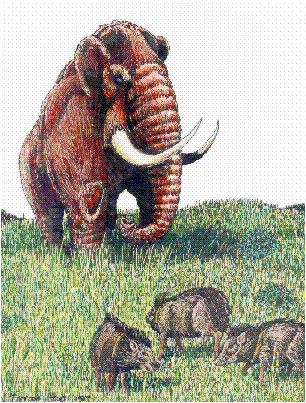 |
| The Wooly Mammoth |
 |
| Saber Tooth Tiger |
 |
| Modern Earth |
The Quaternary Period is the most recent period in the Cenozoic era, as well as in the History of Earth. It has lasted from 1.8 mya to the present. The climate was one of periodic glaciations Few major new animals have evolved, but there was a major extinction of large mammals in Northern areas at the end of the Pleistocene Epoch. Many forms such as saber-toothed cats, and mammoths, etc., became extinct worldwide. Others, including horses, camels and cheetahs became extinct only in North America. The Great Lakes formed during this period and giant mammals flourished in parts of North America and Eurasia not covered in ice. These mammals became extinct when the last Ice Age ended about 11,700 years ago. Modern humans evolved about 40,000 years ago. During the Quaternary period, mammals, flowering plants, and insects dominated the land.
Events that happened during the Quaternary Period
Earliest humans (Cro-Magnon) appear: 0.1





